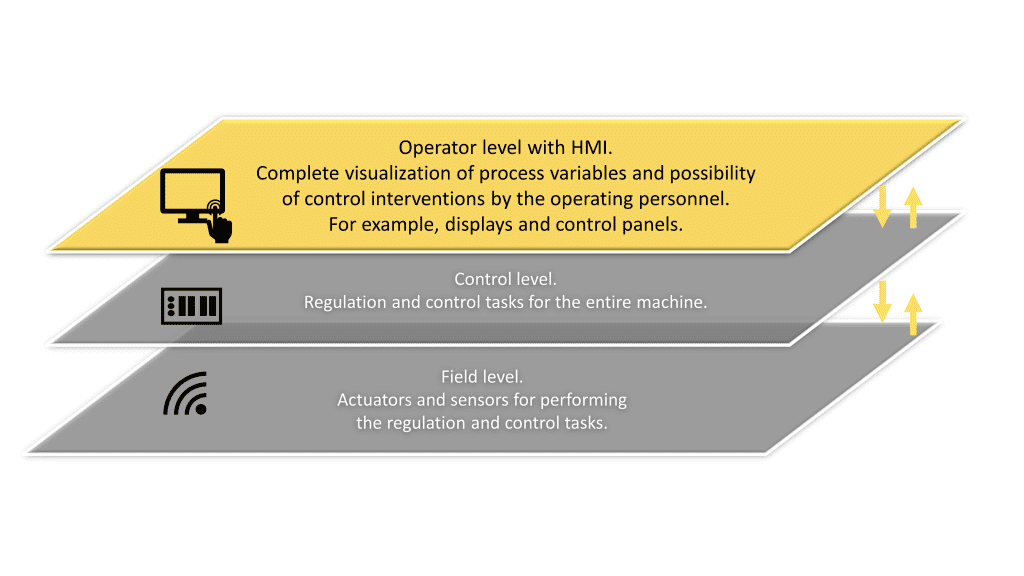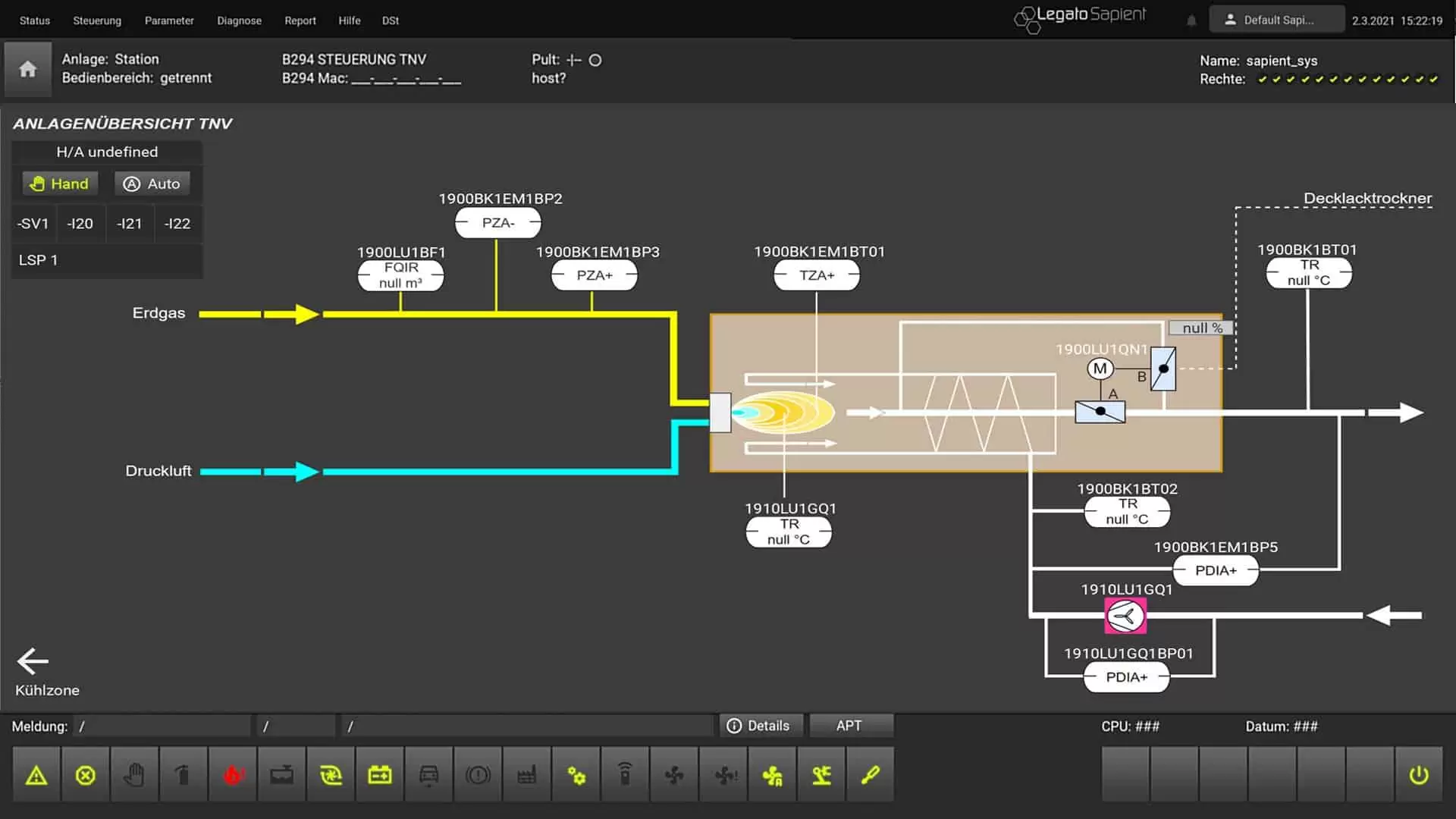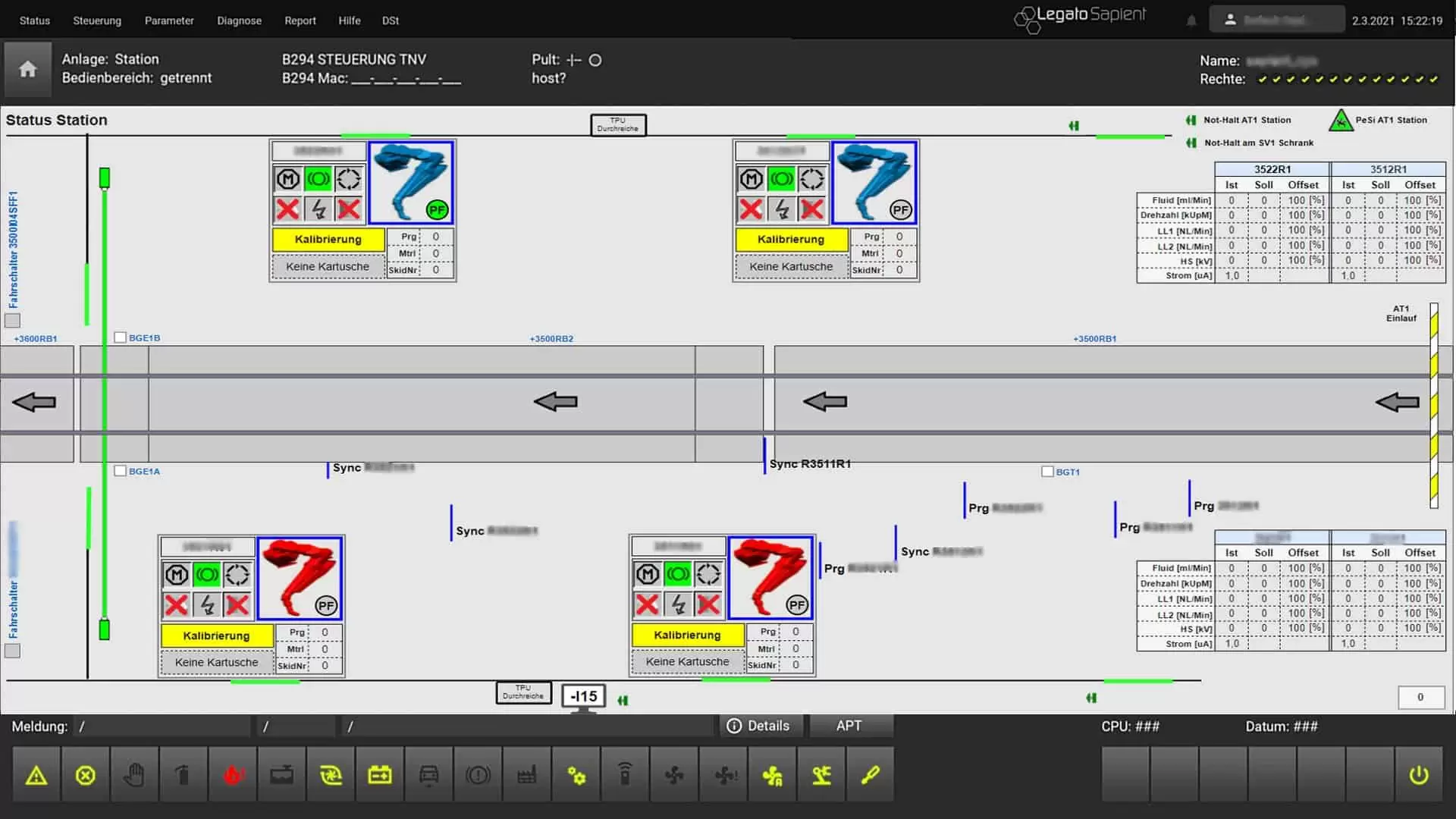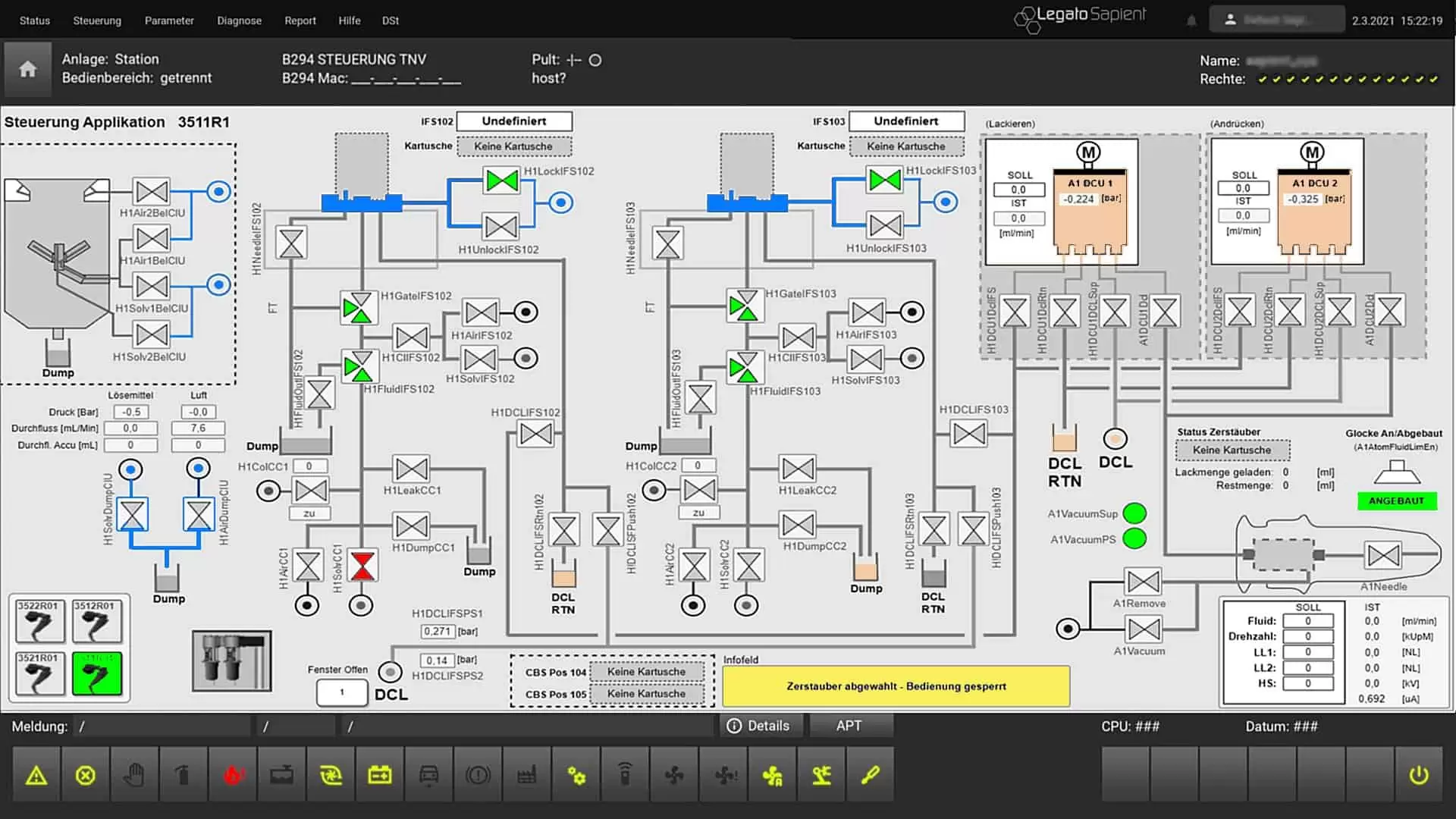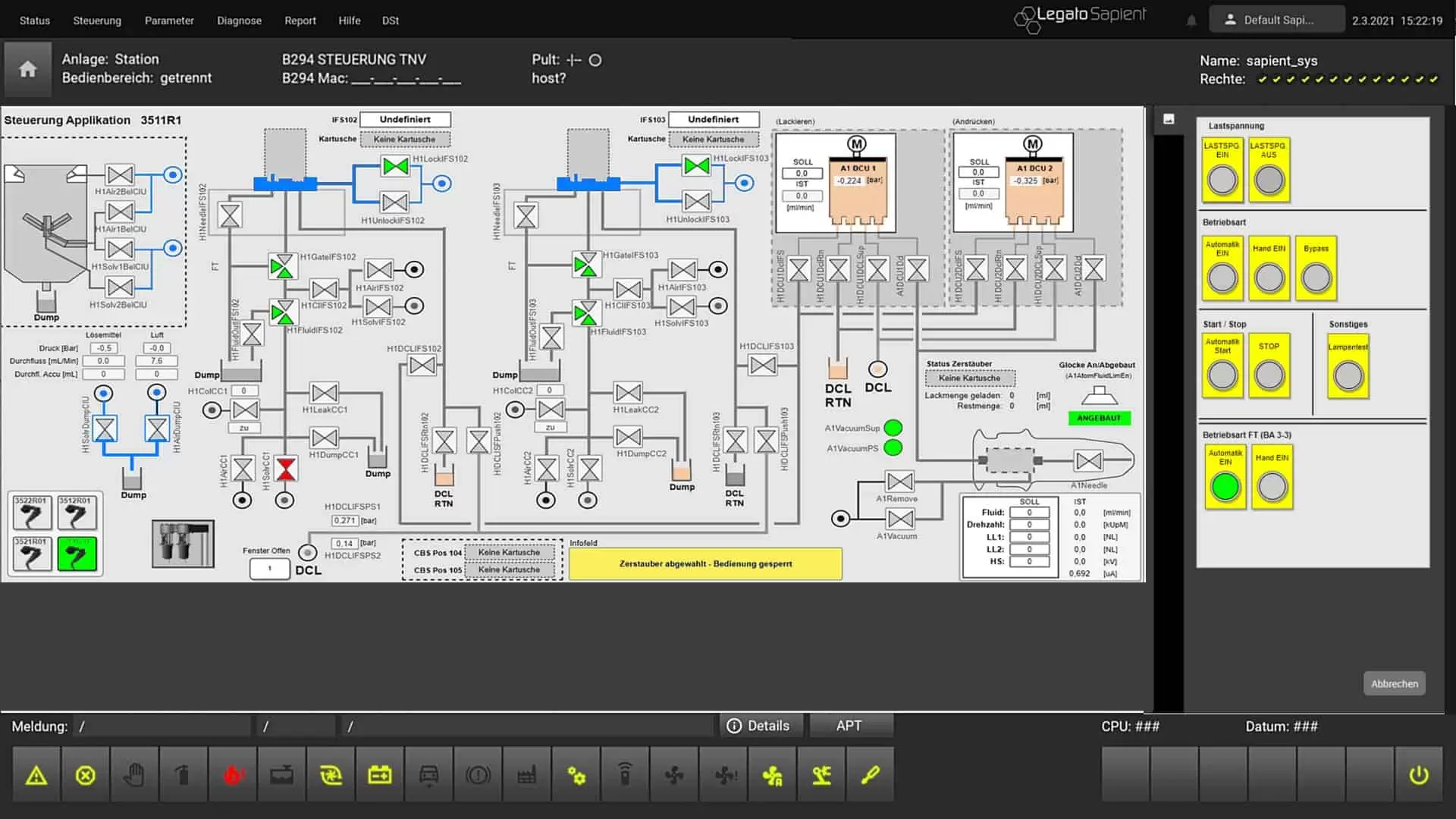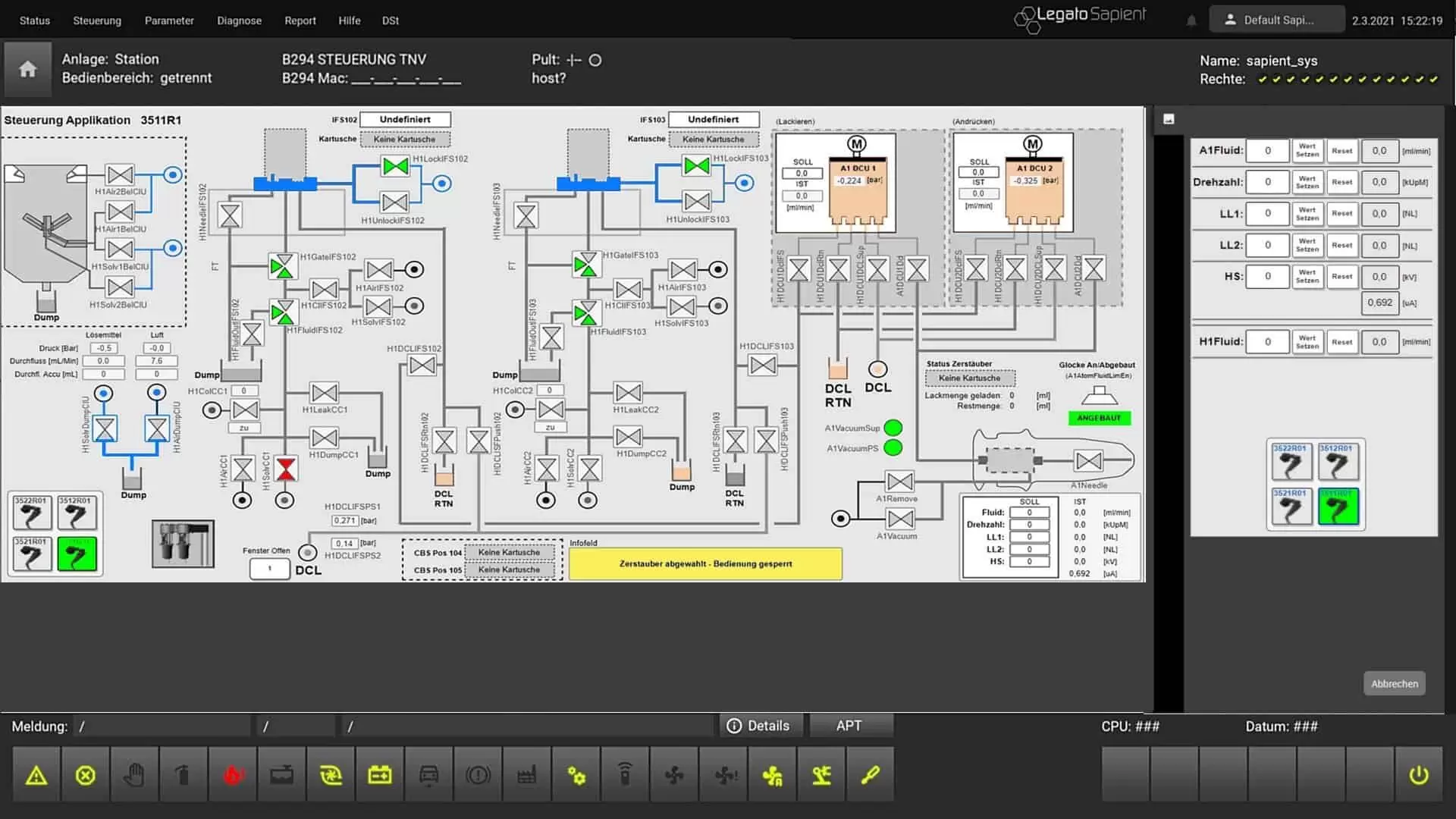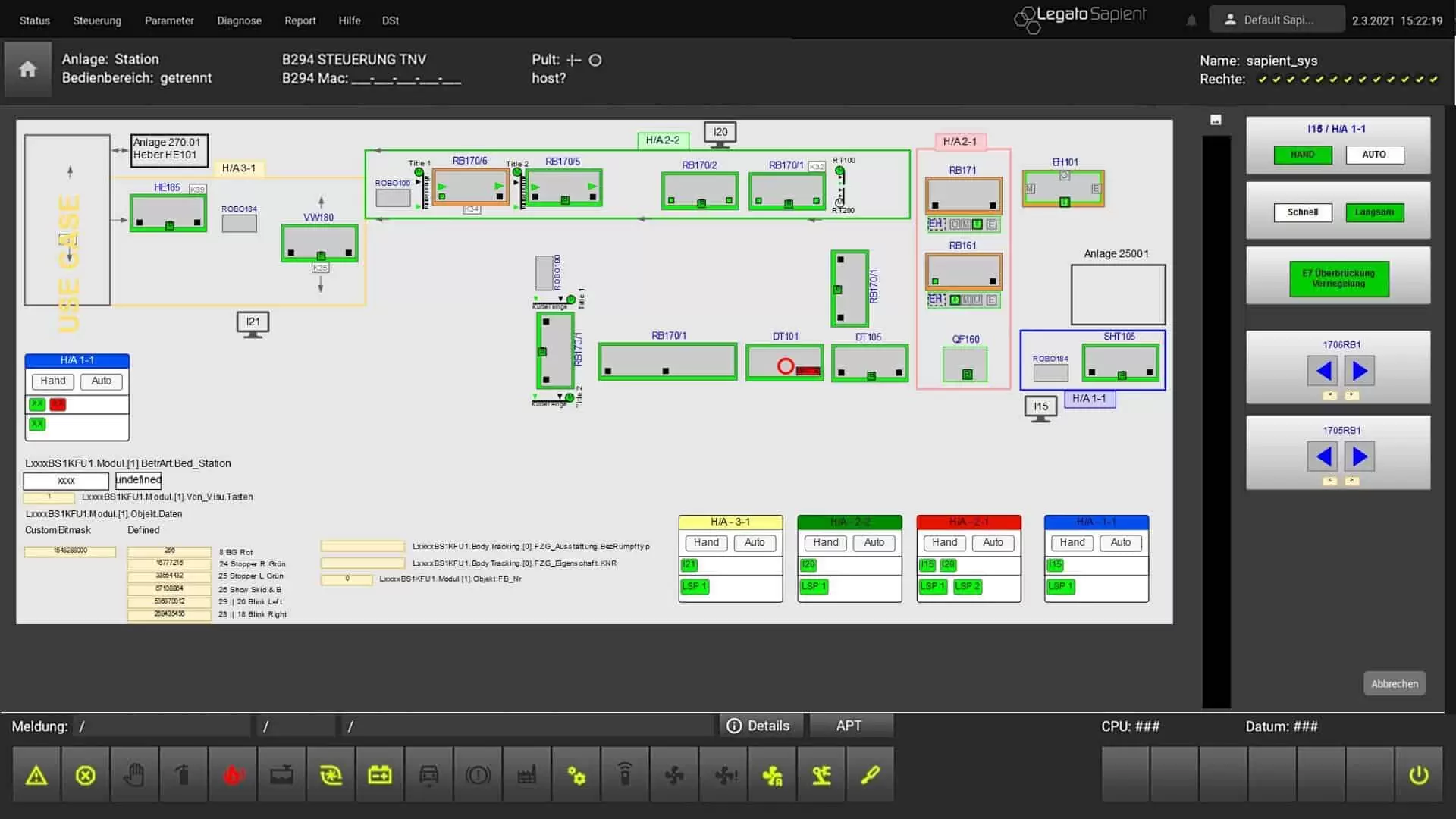The separation between the control system level (MES) and the HMI (Human Machine Interface) analogous to the classic automation pyramid is often still common practice in manufacturing companies. However, heterogeneous system landscapes are not competitive in the long run. System breaks and a non-continuous flow of information are the order of the day, since important information from the HMI is only available locally, usually as fat client solutions, although it would also be necessary elsewhere. Another, significant cost factor in the outlined setup is the expensive and maintenance-intensive hardware and middleware of the terminals.
HMI SCADA system: Close the gap between MES and shopfloor
- Home
- HMI SCADA system: Close the gap between MES and shopfloor
Here, digitization opens up new opportunities: A move away from existing, local fat-client installations in the HMI area is now possible, assuming a fail-safe network as a production-critical medium.
Better control and options for analysis of your data through SCADA-MES-integration and HMI
The modular SCADA-MES Legato Sapient can be extended with HMI functionality. With Legato Sapient in combination with our web-based HMI module, you not only have all plant information stored centrally and visible at a glance, but you can also intervene directly in the plant process. This not only closes the gap between the control level and the HMI, thus ensuring a seamless flow of information without losses as a “single point of truth”, but also decisively reduces the costs for terminal hardware and middleware – common hardware with a web browser is sufficient.
The integration of the web-based variant of the HMI into the control level (MES) results in several advantages:
- Continuity & 360° view of production:linking of central MES and decentralized HMI data for full transparency and thus the best possible support for action regarding i.e. plant monitoring or track and trace
- Significant cost reduction for hardware and middlewareby using the application in the web browser – thus more cost-effective hardware and middleware is sufficient
- Lower operating coststhrough central version updates (instead of locally at each terminal) and other changes; regular, local backups are no longer necessary
- Ideal solution for heterogeneous machine parks:integrated, consistent technology of MES and HMI, independent of the plant suppliers/manufacturers (manufacturer independence)
- Reduced effort for plant commissioningby operating the HMI Designer in the cloud “HMI Designer as a Service”.
MES Legato Sapient with HMI module – a combination with added value
The increasing complexity in manufacturing requires a complete picture of the entire process. This requires data with different levels of detail depending on the application. Legato Sapient with its web-based HMI module combines the decentralized view of the machine with the overall view in the control station, thus ensuring a seamless flow of information and system consistency.
This information must be displayed in an ergonomically meaningful way for the worker so that he can quickly grasp it and react accordingly. Legato Sapient with HMI enables system consistency from different perspectives:
HMI benefits from the user’s perspective:
- no time-consuming change between different systems
- greater transparency, resulting in faster reactions and less machine downtime
HMI benefits from a technical perspective:
- Project planning: Graphical overviews only have to be created once via the integrated, web-based designer and can be used both on HMI terminals and directly in Legato Sapient
- Software maintenance/operation: Two systems (even from two manufacturers) merge into one (application support and IT integration)
The HMI-SCADA-system at a glance
- Device-independent, web-based solution: visualizations always and everywhere available without expensive hardware and middleware
- Decentralized perspective: Local operator terminal with plant-related visualization and operation
- Insight into plant data from upstream and downstream areas and holistic overviews from Legato Sapient
- Server-based solution for graphical process visualizations and process-related operation and control
- Support of several hundred individual stations
- Low latency (< 1 second) for production critical interactions: Data stream without detours via the database
- Regulation of user-specific functions through rights concept, e.g., for execution of safety-critical actions only in the visible area of the plant
The HMI-Designer module at a glance
- HMI-Designer as a Service: operation in the cloud and thus reliable support and easy updates
- Fast and easy pre-commissioning of systems at the supplier’s site through visualization creation (web-based) in the cloud incl. live connection of the machine
- Shorter rollout times at the end customer through simple transfer to the customer’s system
- Automatic standardization through general and customer-specific libraries for graphical elements and their links (e.g., DIN EN ISO 10628 process engineering)
- Simple dynamization through low-code approach similar to Excel formulas
Click-Demo of the HMI-SCADA-system
The following screenshot shows a typical HMI visualization from the field of process engineering (VT).
The upper header represents the central control menu of the plant-specific HMI application. This is used to navigate between the individual areas and to control the application (e.g., change station, switch to manual control, help menu, etc.).
The look & feel of the HMI visualizations can be freely designed via the HMI Designer, object libraries support the standardization of graphical and functional elements. The following example shows typical headers and footers, where the header usually shows the basic information about the HMI visualization, such as station name, status, logged-in user, and corresponding user rights.
The footer of the HMI visualization replaces the operation of the classic hardware buttons.
The following example shows a conveyor system (FT) with four robot cells, the application can be switched to manual control via the “Control” menu.
By clicking on one of the robots in the conveyor visualization, you can navigate to the process engineering detail visualization. Here, e.g., switching states of valves, current messages, and process values (temperatures, etc.) as well as filling levels are displayed.
Clicking on the control panel icon opens the control menu in the sidebar, the machine can now be operated directly via the web client.
Clicking on the application technique opens an area in the sidebar for adjusting the corresponding parameters.
The final image shows a typical picture of the conveyor technology (FT).
FAQ: Information on HMI-SCADA-system and MES
Find out why SCADA and MES require each other in order to maximize the OEE.
What is SCADA?
The abbreviation SCADA stands for supervisory control and data acquisition. It is defined as the level between the control and the planning level in the automation pyramid thus connecting the direct machine operation on the shopfloor and the industrial planning level of a plant. SCADA systems are used to supervise plants from remote and collect and process data.
What is the role of the HMI in a SCADA system?
A Human-Machine-Interface or HMI allows workers to interact with the machines on the shopfloor. Overview visualizations as well as detailed information on temperature, pressure, water flow or similar provide workers with real time data. Each process has its own HMI that can be operated and monitored by the worker. The integration of all HMIs into one system is the SCADA system.
Why install an MES if there is SCADA?
A SCADA system only collects and monitors the data of a shopfloor. In an MES, the data is accumulated to make decisions on management level. This includes calculating the OEE, analyzing the data for efficiency losses and implementing strategies to reduce costs and maximize OEE. Therefore, a SCADA serves the control level while the MES works on a planning level. Both are essential for industry 4.0.
